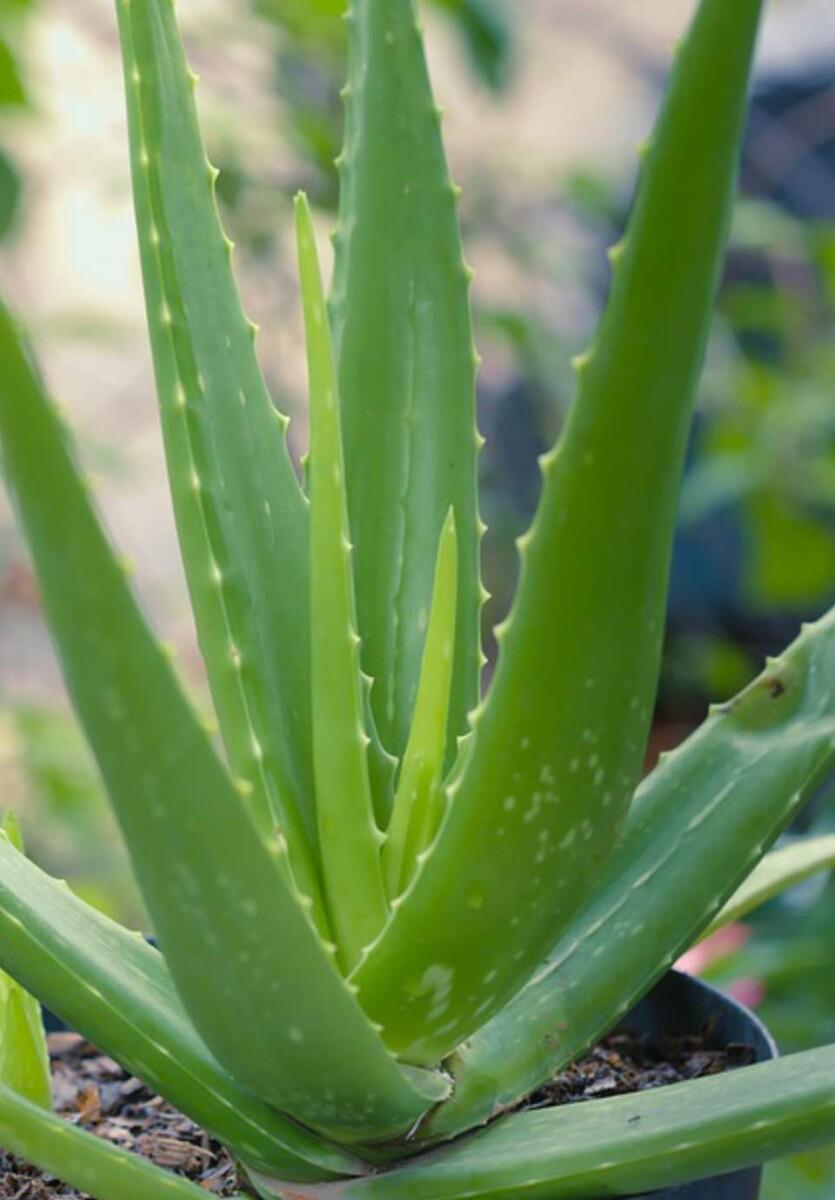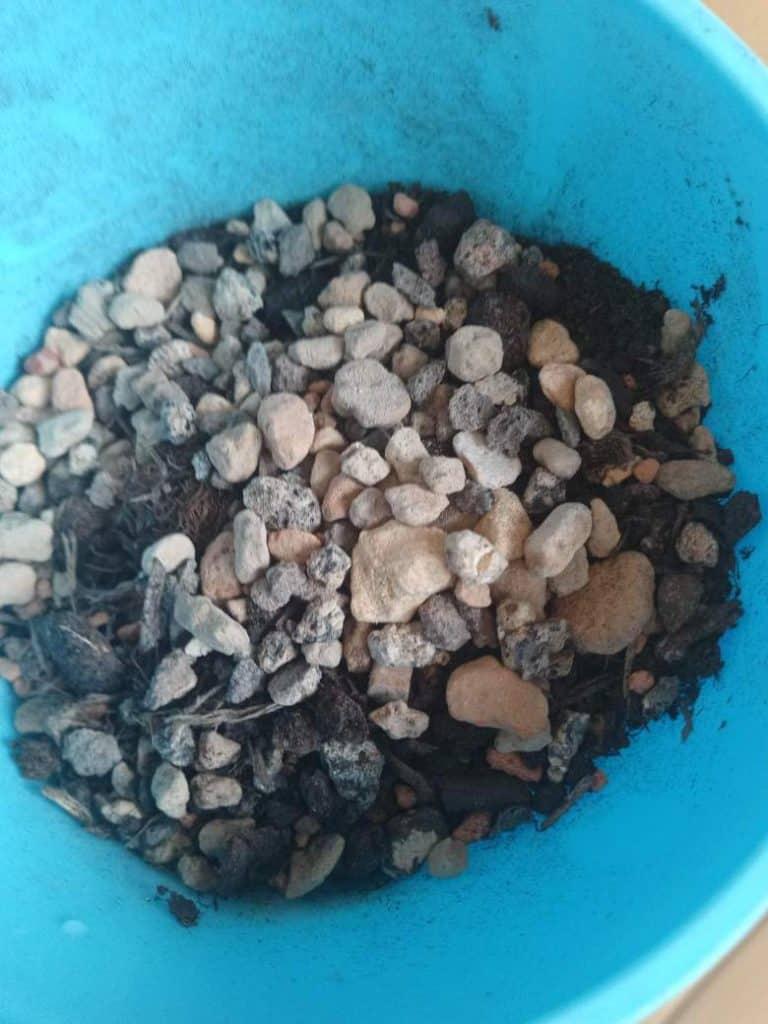If you’ve noticed your aloe vera leaves curling, don’t panic. You’re not alone in facing this issue. Many people mistakenly believe that aloe vera plants don’t need much water, leading to under-watering and drought stress. However, aloe vera requires less frequent watering than most plants, but it should always be watered with a generous soak. Let’s take a closer look at why your aloe vera leaves might be curling and how you can rescue your plant.
Aloe Vera Leaves Curling Inwards Indicates Drought Stress
Aloe vera plants are succulents that store water in their leaves to survive in dry climates. When these plants experience drought stress, their leaves start to curl inward, become thinner, and appear concave. This happens when the plant depletes its stored water. In contrast, healthy aloe vera leaves should be thick, plump, and fleshy, indicating the optimal amount of watering.
Several reasons can contribute to your aloe vera leaves experiencing drought stress:
- Watering the aloe too lightly: Aloes require a generous soak to ensure that enough water reaches the roots.
- Not watering frequently enough: Although aloe vera is drought-tolerant, it still requires scheduled watering to stay healthy.
- Exposure to air conditioning, forced air, or excess wind: Too much airflow can sap moisture from the leaves and dry out the soil rapidly.
- Heat sources indoors: Heat can increase soil temperature and cause water loss from the leaves.
- High sun exposure and temperatures: While aloe vera plants enjoy some sun, intense sun and heat can quickly dry them out.
- Water-repellent soil: When soil containing peat dries out, it can become hard and repel water, preventing it from reaching the plant’s roots.
- Lower humidity: Dry air can increase transpiration from the leaves.
All of these factors contribute to the rapid drying of the soil, loss of moisture from the leaves, and, in the case of light watering and water-repellent soil, the prevention of water absorption by the roots.
How to Revive Aloe Vera with Curling Leaves
To revive your aloe vera’s curling leaves, it’s essential to water your plant correctly. While aloes don’t require frequent watering, it’s crucial to give them a generous soak. This allows the moisture to infiltrate the soil and reach the roots, promoting healthy growth and resistance to drought.
When watering your aloe vera, ensure that water visibly trickles out of the base of the pot. This indicates that the water has reached the roots, allowing them to absorb the necessary moisture. There is no universal instruction for how often to water aloe vera, as it depends on various factors such as climate, sunlight, and humidity.
To determine when to water your aloe vera, perform a simple soil moisture test. Feel the soil through the drainage hole in the bottom of the pot. If the soil feels moist, delay watering for a few days. If it feels dry, it’s time to water your plant. This watering cycle mimics the conditions of aloe vera’s native environment, with periodic rain followed by a period of drought. It helps keep the leaves plump and healthy while avoiding root rot.
Typically, watering your aloe vera once every two weeks is suitable for most climates. However, the demand for water may fluctuate, as aloe vera can be dormant during certain times of the year. For more detailed instructions on how and when to water your aloe vera, refer to my article on how to water aloe vera plants.
To effectively remedy drought stress, place the aloe vera pot in a basin of water for about 10 minutes. This allows the parched soil to soak up the water, providing a good drink for the roots and giving the curled leaves a head start to recover.
Water Repellent Soil: A Common Cause of Curling Leaves
Sometimes, even with proper watering practices, aloe vera leaves may still curl due to drought stress. This can be attributed to the type of potting soil used, particularly those containing peat. When the soil dries out between waterings, certain potting soils can become water repellent, preventing proper water absorption by the roots.
To check if your soil is water repellent, observe it closely when watering. If the water runs off the surface instead of being absorbed, or if a chopstick inserted into the soil emerges dry, your soil may be the problem. In this case, it’s advisable to repot your aloe vera using a well-draining soil mix specifically formulated for succulent plants and cacti. These mixes contain more grit and sand, improving drainage and allowing water to infiltrate even when the soil is dry.
A succulent soil mix retains a porous structure that balances moisture levels, ensuring water reaches the roots while preventing root rot – a common problem for aloe vera. This will provide your curled leaves with the much-needed hydration to recover. After a few watering cycles, your aloe vera should regain its healthy, plump leaves.
Indoor and Outdoor Factors: Consider the Environment
Whether your aloe vera is indoors or outdoors, certain factors can affect its moisture levels and contribute to curling leaves. Indoors, air conditioning and forced air create air currents that can dry out your plant more quickly than usual. Additionally, lower humidity indoors can cause the soil to dry out faster. These factors should be considered when establishing your watering cycle, as indoor aloe vera typically requires more frequent watering than outdoor plants.
If your aloe vera is located outdoors, higher levels of sun exposure and wind may be responsible for the curling leaves. Consider finding a more sheltered location for your plant to protect it from excess wind and ensure it receives around 4-6 hours of morning sun followed by bright indirect light in the afternoon. Increasing the frequency of watering can also help combat the drying effects of sun and wind, but always water when the soil is dry to avoid root rot.
Remember, there is no one-size-fits-all watering schedule for aloe vera. Factors such as climate, humidity, and even individual plant variations can influence the rate at which your aloe vera dries out and its watering needs. To determine when your plant needs water, rely on the simple method of feeling the soil through the drainage holes. This balance of hydration ensures healthy leaves and prevents root rot.
With the proper watering frequency and ideal environmental conditions, your aloe vera’s curled leaves should gradually recover in the following weeks. For more information on aloe vera care, including how to tell if your plant is overwatered or underwatered and why it may not be growing, refer to my related articles.
Key Takeaways:
- Aloe vera leaves curl inward due to drought stress and depletion of stored water.
- Water-repellent soil, indoor factors like air conditioning, forced air, and low humidity, as well as outdoor factors like sun exposure and wind, can all contribute to curling leaves.
- Revive your aloe vera by giving it a generous soak and adjusting watering frequency according to climate and soil moisture.
- Consider repotting your aloe vera in a well-draining succulent soil mix to prevent water repellency.
- Find a suitable location for your plant, whether indoors or outdoors, that minimizes drying effects.
- Always water when the soil is dry to maintain a healthy balance of hydration.
Happy aloe vera gardening!



